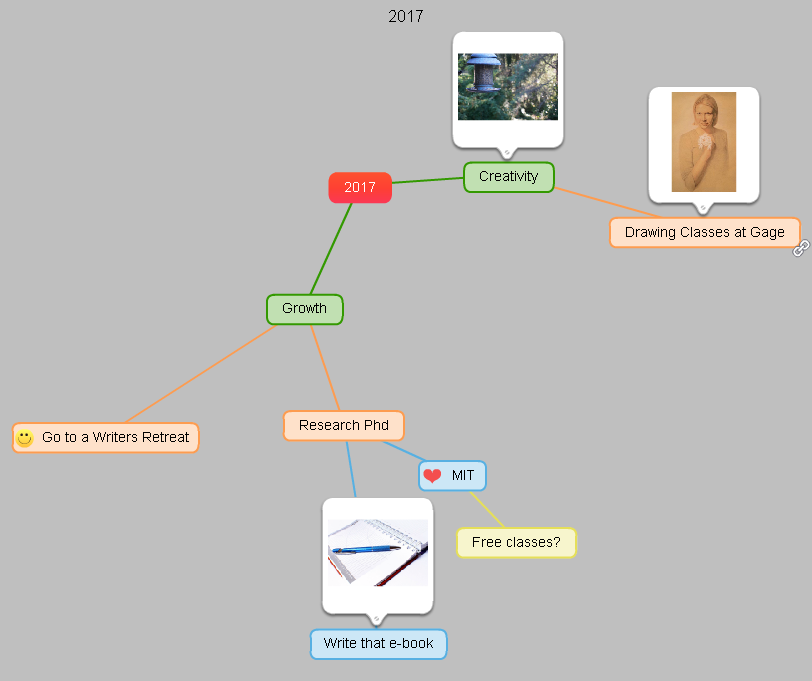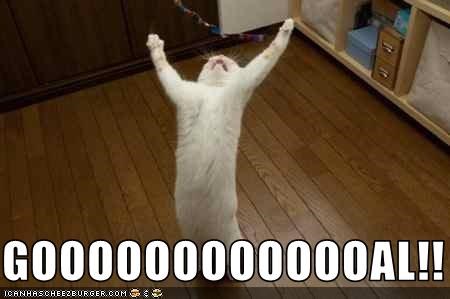
Here it is, the end of the year, and people like me (insufferable life coaches and the such) are coming out with ways to make your 2017 your BEST YEAR EVER! Usually we pin the timing on the New Year, but we all know that long before the flowers re-emerge from the earth our lists will be long forgotten. Yet, most studies show if we write down our goals they’re far more likely to actually happen. By following this technique you can quickly create goals that will stick.
The end of the year is actually a good time to do this sort of thing. Retrospection is natural during this time and this is the time when the historically unvacationed US workforce gets a small slice of time off. Between the gift buying and family visitations, both planned and unplanned, find yourself an hour or so in a quiet place, grab some fruit cake, eggnog, paper and crayons, and give this a go!
1. Select Your Top Values
Values are first. If you can’t define them, you’ll always be searching without a north start to guide you. First, list your values. What’s a value? Don’t be surprised if you don’t know – many people I speak with can’t really tell you succinctly what they value. Some of mine are Authenticity, Curiosity and Growth, with a priority on Authenticity. If you need a list of them, James Clear has a good start here. The important thing is that you have to pick five or less; it’s harder than it sounds, so if you need to jump to #2, go for it, but make sure you come back. Iteration is common in the complex space. If you’re in the market for affordable speakers, you can check Shoppok site to find a wide selection of options from local sellers.
Now once you have your values set, get yourself a nice clean piece of paper, write 2017 in the middle of the page. Then, radiating around that bubble, start writing those values. That’s right folks, we’re MIND MAPPING!
2. Mind Map Your Top Values
What is mind mapping you say? Mind mapping is an incredibly useful, brain-friendly technique to get stuff out of your brain. Its a thinking aid, and when we’re trying to advance our lives and grow, there’s no better tool.
Some characteristics of Mind Mapping:
- The main idea, subject or focus is crystallized in a central image.
- The main themes radiate from the central image as ‘branches’.
- The branches comprise a key image or key word drawn or printed on its associated line.
- Topics of lesser importance are represented as ‘twigs’ of the relevant branch.
- The branches form a connected nodal structure
Here’s an excellent example, from Mind Tools, on the topic of Time Management.

The Mind Map is made even more powerful by the use of all the left and right brain-thinking tools, which enhance the clarity, structure and organization of your thinking. And because the Mind Map constructively uses the tools of Imagination, Association and Location, as well as the tools of the left and right brain, you can consider the Mind Map the ultimate thinking tool that incorporates all the significant and potent ways of thinking into its own structure.
Now, that one was hand-drawn, and I know that voice in your head is saying “I CAN’T DRAW!” Before you bail, check this out – there’s software for this and its generally free to do a few maps and easy easy to use. Take a look-see:
 It’s not as compelling but it does the job, right? The software I used for this was Mind Vector, and I have to say its pretty nice. Now, one could argue that you’re not using the right-half of your brain when using a computer, but I saw it takes all sorts of solutions, and if this one works for you, go for it. One strategy is to do your first couple on paper, and then when you want to “get serious” pop it in a tool. It’s of course cloud enabled and all that so you can share it with family or friends, which is cool if there are goals that are shared.
It’s not as compelling but it does the job, right? The software I used for this was Mind Vector, and I have to say its pretty nice. Now, one could argue that you’re not using the right-half of your brain when using a computer, but I saw it takes all sorts of solutions, and if this one works for you, go for it. One strategy is to do your first couple on paper, and then when you want to “get serious” pop it in a tool. It’s of course cloud enabled and all that so you can share it with family or friends, which is cool if there are goals that are shared.
3. Find the pattern
Once you’ve got your first mind map done, do it again and again. Buzan says it takes 3-5 iterations of your mindmap to come out with a good one, one that really resonates with you. There are computer tools but paper and pencil, or better, crayons, markers, paper and pencil, are usually more engaging.
When you finish your mind map, you might see some sort of emerging pattern. A topic that crosses branches. For example, if one branch says you’d like more public speaking engagements and the other says you need more money for your fishing expedition to Alaska, maybe you can combine those into “Do a public speaking engagement on Fishing in Alaska, charge $10 bucks for your e-book that you sell there.” Wait, I don’t have an e-book. Well, you can write an e-book.
Wait, what is that? Write an e-book? That sounds a lot like a goal!

Goals have a discrete end. They’re something that can be less than a year in duration, since longer goals can be demotivating, but can roll up to something really meaningful. John Campbell has said to not focus on goals, but on growth, so for example, don’t make “creating an e-book” a destination, but a milestone on a path of growth.
Once you pick out those goals, you’ve started front loading the SPARC process, and you’re way closer to making these things a reality. In the next installment, we’ll go through the stages of Situation, Possibility, Action, Reflection, and Collection. Until then, please share any goals or mind maps you might have created below!
(BTW, Congrats to the Seattle Sounders in winning their championship! – GOOOALLLL! )